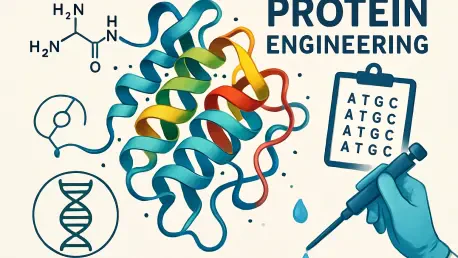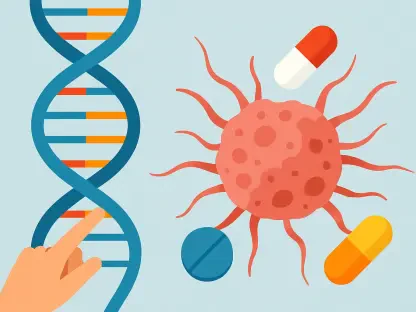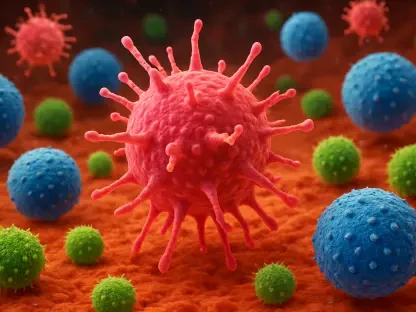Advancements in protein engineering now stand on the brink of a revolution, driven by innovative solutions like AiCE—a novel AI framework reshaping how proteins are designed and optimized. Traditional challenges such as cost, scalability, and the accessibility of AI-based methods have hindered progress in this field. The introduction of AiCE emerges as a pivotal breakthrough, promising to streamline and enhance the evolution of proteins, potentially transforming scientific research and application.
Introduction to AiCE and its Core Concepts
AiCE, short for AI-informed Constraints for protein Engineering, is spearheading a transformative approach to protein evolution, led by Professor Gao Caixia and her team from China’s Institute of Genetics and Developmental Biology. This framework uniquely incorporates structural and evolutionary constraints within an inverse folding model, sidestepping the need for specialized training of AI models—a concept that marks a major departure from existing methods. By facilitating protein evolution in a more efficient and accessible manner, AiCE addresses key challenges faced in the current landscape of protein engineering.
Significance and Context of AiCE in Protein Engineering
The realm of protein engineering, situated at the crossroads of technology and biology, endeavors to create and modify proteins for enhanced traits suited to varied applications, from healthcare to agriculture. Historically, the domain grappled with constraints such as high costs and limited accessibility, especially concerning AI-based strategies requiring extensive computational power. AiCE’s emergence is immensely relevant, offering a user-friendly yet precise solution that broadens the scope for scientific communities worldwide, potentially revolutionizing applications in precision medicine and beyond.
Research Methodology, Findings, and Implications
Methodology
AiCE employs an intricate methodology, divided into two key modules: AiCEsingle and AiCEmulti. AiCEsingle tackles the prediction of single amino acid substitutions by leveraging inverse folding models that simulate protein 3D structures, incorporating structural constraints to ensure accuracy. Concurrently, AiCEmulti addresses challenges of negative epistatic interactions in combinatorial mutations, employing evolutionary coupling constraints to expand predictive accuracy without heavy computational demands.
Findings
Benchmark data reveals that AiCE delivers superior performance, particularly AiCEsingle, which outshines existing AI-driven approaches by margins ranging from 36% to 90%, as demonstrated in deep mutational scanning datasets. This advancement is crucial in tackling complex proteins and protein–nucleic acid interactions and showcases AiCE’s capability in evolving genomes across diverse structures and functions. Successful applications include the development of novel base editors, each displaying marked improvements in precision and activity.
Implications
The success of AiCE underscores its wide-ranging implications in protein engineering, making high-level redesign more accessible and interpretable. The framework’s integration with precision medicine, genetic engineering, and molecular breeding proposes a future where protein evolution is both efficient and scalable, influencing diverse scientific pursuits. AiCE’s potential extends into domains of therapeutic development, biotechnology, and even agricultural innovation, catalyzing advancements poised to reshape fields involved in genetic manipulation.
Reflection and Future Directions in AiCE Development
Reflection
Reflecting on the study’s accomplishments reveals the profound impact of incorporating AI-informed constraints within protein engineering. Challenges primarily lay in the testing and integration phase, requiring adept navigation of intricate datasets and computational models. Future expansions could delve deeper into module enhancements, allowing broader applicability and adaptation to areas presently unexplored.
Future Directions
Future exploration entails refining AiCE’s modular frameworks, fostering further accuracy, and extending applications beyond current benchmarks. Potential future research could address unresolved aspects of combinatorial mutations and expand the scope into less-studied protein complexes. Innovation in related technologies may reveal additional applications, branching into emerging fields such as synthetic biology and nanotechnology.
Conclusion
AiCE stands as a landmark development, marking a decisive shift in the landscape of protein engineering. Its adaptive methodology and superior performance signal a move toward streamlined processes, enabling broader scientific participation and accessibility. As research progresses, AiCE’s contribution offers exciting possibilities for advancement, ushering in promising solutions across multiple scientific disciplines. Its potential not only empowers contemporary applications but lays a foundation for pioneering future innovation.









